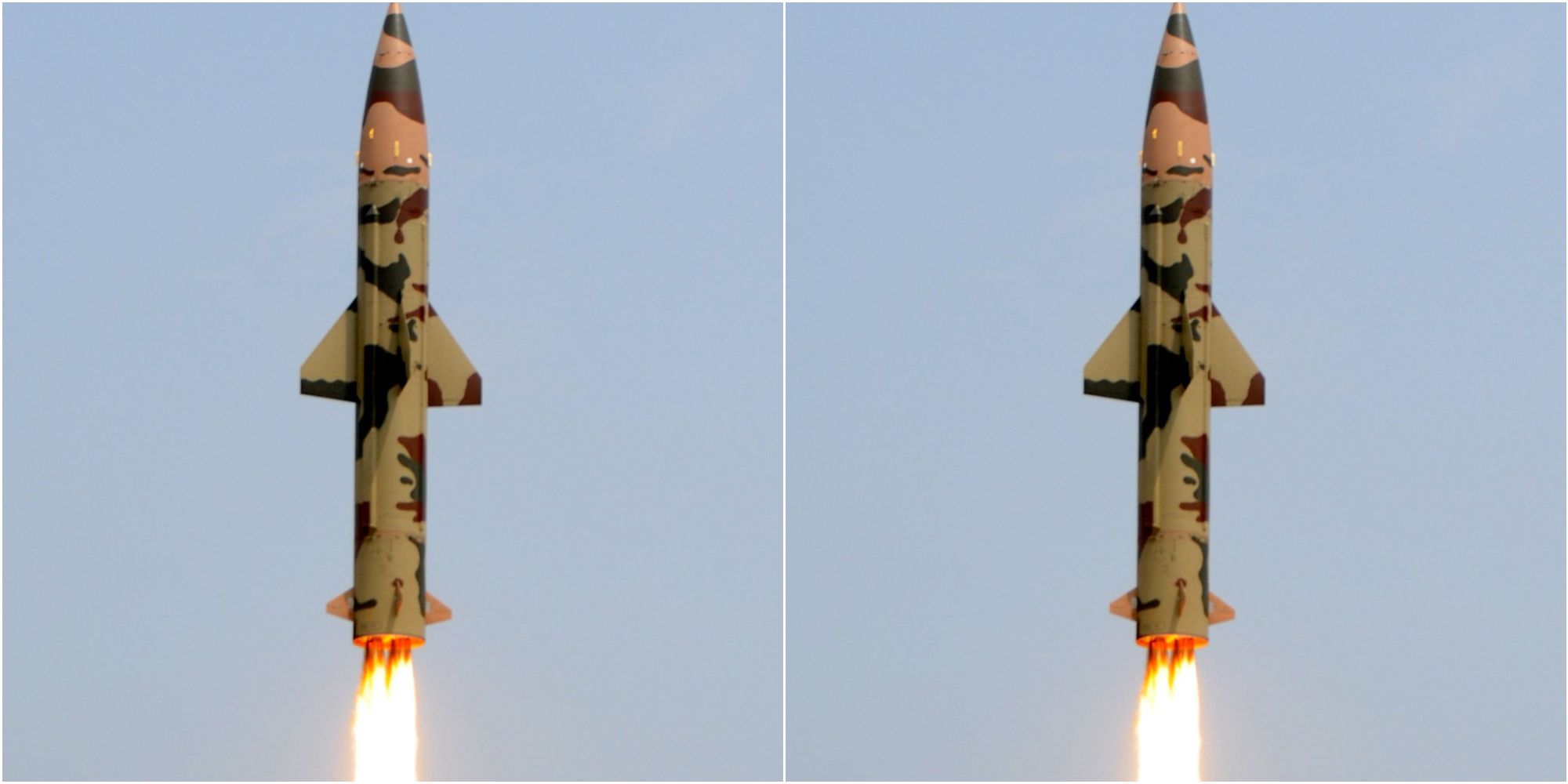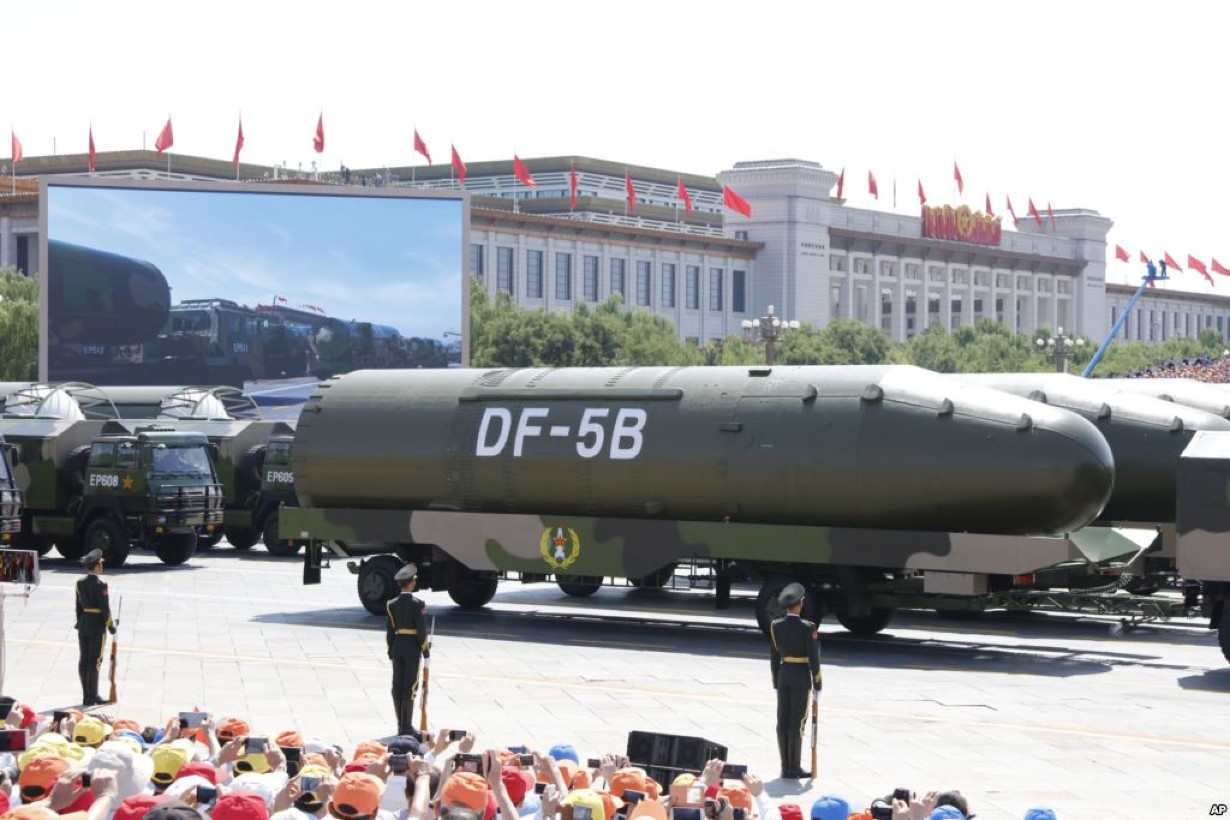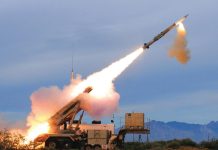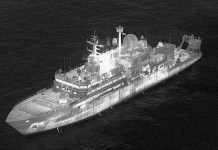India entered an elite club of nations with the capability to fire a Ballistic Missile Defense (BMD) interceptor from a naval platform when it successfully carried out the maiden test of the weapon system off its coast from the eastern province of Odisha on Friday.
The successful test was announced on Saturday through a statement from the Ministry of Defense (Mod) in New Delhi. However, further details were not immediately available.
“(The) Defence Research and Development Organization (DRDO) and (the) Indian Navy successfully conducted a maiden flight trial of sea-based endo-atmospheric interceptor missile off the coast of Odisha in the Bay of Bengal on April 21, 2023,” the statement, issued by the MoD spokesperson A. Bharat Bhushan Babu, read.
The purpose of the trial was to engage and neutralize a hostile ballistic missile threat, thereby elevating India into the elite club of nations having naval BMD capability, the statement said.
Endo-atmospheric interception means the missile fired by Indian testing agencies had destroyed the incoming enemy ballistic missile within the Earth’s atmosphere. Exo-atmospheric interception, on the other hand, is for destroying incoming enemy ballistic missiles outside of the Earth’s atmosphere at a higher altitude.
The @DRDO_India & #IndianNavy, today successfully conducted a maiden flight trial of sea-based endo-atmospheric interceptor missile off the coast of Odisha in the Bay of Bengal.
Read for more: https://t.co/4ZfFRatSDS@rajnathsingh @giridhararamane @indiannavy @PIB_India— A. Bharat Bhushan Babu (@SpokespersonMoD) April 22, 2023
While India’s Minister of Defense Rajnath Singh, who is recovering from COVID-19 infection, congratulated the teams involved in the successful demonstration of the ship-based BMD capabilities, the DRDO Chairman and Government of India’s Secretary for Defense Research and Development Dr. Samir V Kamat said India “has achieved self-reliance in developing highly-complex network-centric anti-ballistic missile systems.”
Captain D. K. Sharma, a retired Indian Navy officer who has commanded warships and served as the naval spokesperson till two years ago, said the BMD capability from a naval platform is an additional option at the hands of the Indian armed forces to intercept an incoming enemy ballistic missile, ensuring a full-spectrum counter capability.
“The option would be exercised based on the priority and direction of the attack. Essentially, this is to counter any attack that may take place on India’s strategic assets, even those that are at sea,” Captain Sharma noted.
Land-Based BMD Tests Were Successful
Prior to this BMD test from a warship, India successfully demonstrated the land-based BMD system with the capability to neutralize ballistic missile threats emerging from adversaries. In November 2022, India’s DRDO successfully conducted the maiden flight test of Phase-II of the BMD interceptor, code-named AD-1 missile, with a large kill altitude bracket.
That test, too, was carried out off the Odisha coast, which is now the standard location for all BMD tests in India.
0UKH.jpg)
AD-1 is a long-range interceptor missile designed for both low exo-atmospheric and endo-atmospheric interception of long-range ballistic missiles and aircraft. It is propelled by a two-stage solid motor and equipped with an indigenously developed advanced control system, navigation, and guidance algorithm to precisely guide the vehicle to the target.
The successful trial of AD-1 from both land-based and sea-based platforms would provide great operational flexibility to the Indian armed forces. India now possessed multiple options and the capability to engage incoming enemy ballistic missiles. The Indian BMD program aimed at providing a shield over its skies against all hostile missiles, including ones carrying nuclear warheads.
Origins Of BMD Program
India launched the BMD program after the war with Pakistan in the Kargil sector in 1999 to counter the enemy nation’s widening spectrum of ballistic missiles that usually delivered both conventional and nuclear warheads. China, too is said to have contributed heavily to the development of Pakistan’s ballistic missile capabilities.
The two-tiered BMD program involved Prithvi missile-based Air Defense that can intercept enemy missiles at altitudes of 50 km to 180 km in the first layer. The Pradyumna interceptor has replaced the Prithvi Air Defense BMD already.

The second layer under the program is the Advanced Air Defense system for low-altitude interceptions. The Advanced Air Defense system is designed to destroy hostile missiles at 15 km to 40 km altitudes.
The Prithvi Air Defense system was first tested in 2006, then making India only the fourth nation globally to have such capabilities, after the United States, Russia, and Israel.
The Advanced Air Defense system got tested for the first time in 2007. Since then, both systems have gone through successive and multiple rounds of tests and are now in the process of deployment with the Indian armed forces.
Threats From Pakistan, China Ballistic Missiles
India faces threats of a ballistic missile attack, with either conventional or nuclear warheads, from both Pakistan and China. While Pakistan has road-mobile Abdali, Ghaznavi, Shaheen-I, and NASR ballistic missiles with shorter ranges, it also possesses medium-range Shaheen-2 and Ghauri missiles that can reach the western coast of India and most of northern India.
Experts also believe that Pakistan is developing the Shaheen-3 and the Ababeel medium-range missiles, including the Multiple-Independently Targetable Re-entry Vehicle (MIRV) in the latter’s design. These capabilities are yet to be tested, and doubts exist if Pakistan has successfully miniaturized a nuclear warhead for the MIRV design.
China’s Rocket Force, on the other hand, has multiple ballistic missiles that can reach any part of India and beyond under its Dong Feng (DF) range of missile systems, covering ranges from 300 km to 15,000 km.

Chinese PLA Navy possesses the Submarine-Launched Ballistic Missile JL-2 with ranges between 2,000 km to 3,000 km. The Indian test of a BMD from a naval platform is expected to essentially counter the Ju Lang JL-2 when fired from underwater at Indian targets.
India’s Other Missile Capabilities
India also conducted the first successful Anti-Satellite Test under its Mission Shakti project in March 2019, taking India to a league of nations such as the United States, Russia, and China possessing such a capability.
While the India-made Akash missile is part of the air defense systems possessed by the Indian armed forces, it is now in the process of inducting the Russian-origin S-400 Trumf, too, even though the Ukraine war has delayed the delivery of these air defense missiles to India, as reported recently by EurAsian Times.
File Image: INS Dhruv (Hindustan Shipyard Limited/Government of India)In 2021, the Indian Navy inducted INS Dhruv, a nuclear missile tracking warship, to join an elite club of nations such as the US, Russia, China, the United Kingdom, and France to have such a platform.
The 17,000-tonne INS Dhruv was developed by the DRDO in collaboration with the technical intelligence agency of India, the National Technical Research Organization (NTRO), and built by Visakhapatnam-based state-run Hindustan Shipyard Limited.
It can be used to provide early warning of attacks by ballistic missiles launched from Pakistan and China.
With Visakhapatnam as its home base, INS Dhruv is operationally controlled by the nuclear missile operating Strategic Forces Command (SFC) of the Indian armed forces and is seen as India’s answer to Communist China’s Rocket Force.
- NC Bipindra is a 30-year veteran in journalism specializing in strategic affairs, geopolitics, aerospace, defense, and diplomacy. He has previously written extensively for the Times of India, New Indian Express, Press Trust of India, and Bloomberg News. He can be reached at ncbipindra (at) gmail.com
- Follow EurAsian Times on Google News




